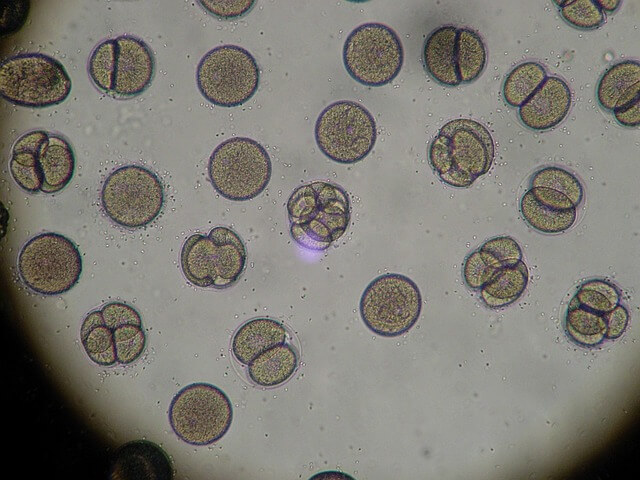Researchers at the University of Oxford report that early human embryos have limited ability to repair DNA damage. Their new study raises concerns about the potential dangers associated with gene editing techniques for addressing inherited diseases in embryos. While gene editing using CRISPR-Cas9 was found to be highly efficient in targeting DNA sites, the repair process often resulted in additional mutations rather than correcting existing ones. These findings emphasize the need for further research and caution in the use of genome editing in human embryos.
Scientists have discovered that the cells of early human embryos have a limited capacity to repair DNA damage, which poses challenges for the proposed use of gene editing techniques to address inherited diseases and for in vitro fertilization (IVF) in general.
Dr. Nada Kubikova from the University of Oxford presented the research at the 39th annual meeting of the European Society of Human Reproduction and Embryology (ESHRE). Dr. Kubikova warned about the potential risks of commonly-used gene editing technologies when applied to human embryos, stating, “Our new findings provide a warning that commonly-used gene editing technologies may have unwanted and potentially dangerous consequences if they are applied to human embryos.”
The study focused on evaluating the gene editing tool CRISPR-Cas9 in early human embryos. Dr. Kubikova explained, “Our results show that the use of CRISPR-Cas9 in early human embryos carries significant risks. We have found that the DNA of embryo cells can be targeted with high efficiency, but unfortunately, this rarely leads to the sort of changes needed to correct a defective gene. More often, the strand of DNA is permanently broken, which could potentially lead to additional genetic abnormalities in the embryo.”
While gene editing has been used in treating gene mutation-related diseases in children and adults, its use in embryos is currently prohibited in most countries worldwide due to concerns about potential genetic changes that could be passed down through generations and uncertainty about its safety.
Dr. Kubikova highlighted the gaps in our knowledge and the need for evaluation: “Significant gaps in our knowledge still remain… We wanted to evaluate whether CRISPR-Cas9 could be an effective method for correcting genetic mistakes in human embryos and to shed light on whether such methods would be safe to use.”
In the study, the researchers used CRISPR-Cas9 to create breaks in the DNA strands of 84 embryos and analyzed the repair mechanisms. They found that while CRISPR was highly efficient in targeting DNA sites, only 9% of the targeted sites were repaired using the clinically useful process of homology directed repair. Fifty-one percent of broken DNA strands underwent a process called non-homologous end joining, resulting in mutations, and 40% of the broken strands remained unrepaired. The unrepaired breaks led to the loss or duplication of large chromosome segments, which could adversely affect embryo viability and increase the risk of congenital abnormalities.
Dr. Kubikova stated, “Our study shows that homology directed repair is infrequent in early human embryos and that, in the first few days of life, the cells of human embryos struggle to repair broken DNA strands… This would be a challenge if there were attempts to use CRISPR-Cas9 to correct inherited disorders in human embryos, as it suggests that most times when it is attempted, it will not be successful.”
Despite the cautionary findings, the study also provided insights into potential improvements in gene editing technology. Dr. Kubikova explained, “While the results caution against the use of genome editing in human embryos, there were some positive findings, suggesting that risks can be lowered and the ability to successfully remove mutations can be increased by modifying the way in which genome editing is undertaken. This offers hope for future improvements to the technology.”
The study’s implications extend beyond gene editing in embryos. Dr. Kubikova highlighted a possible connection between the inability of embryos to efficiently repair DNA damage and the failure of some IVF embryos to develop. Understanding this relationship may lead to enhanced IVF treatments.
Moving forward, the researchers aim to explore new approaches to protect early embryos from DNA damage and develop gentler methods of gene editing that minimize DNA strand breakage, which could be more manageable for embryos.
Dr. Kubikova concluded, “In the future, such methods may offer the possibility of reversing mutations that have blighted families for generations, preventing the inheritance of catastrophic disorders.”
Professor Karen Sermon, the chair-elect of ESHRE, who was not involved in the research, commended the study for emphasizing the importance of thorough research and understanding before attempting gene editing in human embryos. She acknowledged the potential of gene editing as a tool to prevent serious genetic diseases but cautioned that stringent regulation and further research are necessary to avoid unforeseen consequences and improve fertility treatments.
Takeaway
- Early human embryos have limited ability to repair DNA damage, as revealed by a study presented at the 39th annual meeting of the European Society of Human Reproduction and Embryology (ESHRE).
- The use of commonly-used gene editing technologies, such as CRISPR-Cas9, in human embryos carries significant risks, including the potential for permanent DNA strand breaks and the introduction of additional genetic abnormalities.
- While CRISPR-Cas9 was found to be highly efficient in targeting DNA sites, the process of repairing the DNA often resulted in mutations rather than correcting existing ones, making it challenging to successfully use gene editing to address inherited disorders in human embryos.
- The study highlights the need for further research to understand gene editing techniques and their impact on human embryos, as well as the importance of cautious regulation and stringent evaluation before attempting gene editing in embryos. The findings also offer insights into potential improvements in gene editing technology and its implications for fertility treatments.


